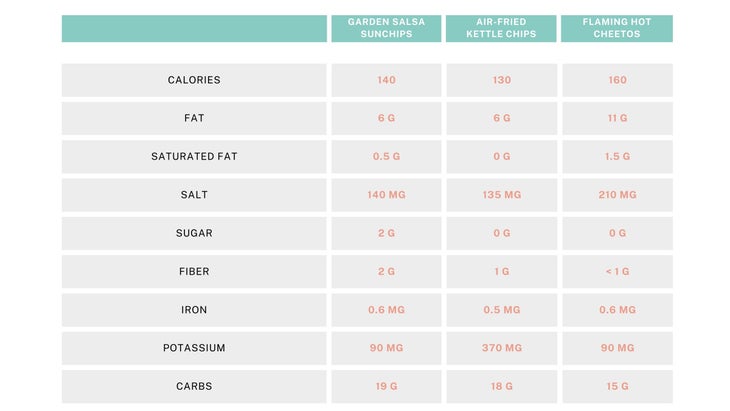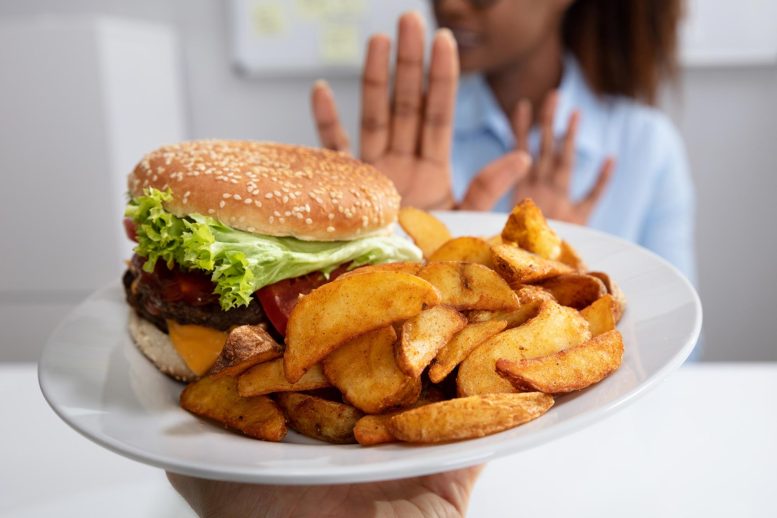Although your daily life choices—like what you eat or how often you exercise—may not seem like a big deal day-to-day, over time, they can add up and contribute to what’s known as chronic inflammation. Unfortunately, chronic inflammation in the body over time has been linked to a variety of serious diseases, including cardiovascular disease, cancer, diabetes mellitus, chronic kidney disease, non-alcoholic fatty liver disease and autoimmune and neurodegenerative disorders.
While this seems bleak, there are small changes in your choices that can make a significant impact on your long-term health, including what you eat. A plant-forward diet that focuses on fruits, vegetables, whole grains, nuts, and seeds (such as the Mediterranean Diet) has been proven to be the most effective for keeping inflammation in the body low. This means packing your plate with all of those foods that help fight inflammation like avocados, cherries, fatty fish, nuts, dark leafy greens and more.
Eating a fast-food spot to reduce inflammation may seem counterintuitive, but sometimes those are your only options, especially if you’re living a hectic, busy life. Or sometimes you just want to eat there because we all know they are pretty good. To help you make the best choice for your health, we asked a number of registered dietitians to share the best anti-inflammatory options at some of your favorite fast-food spots. Here are a few to keep in mind, from breakfast and drinks to entrees and sides, as well as tips to help you order at other places that might not be listed.
1. Subway: Rotisserie-Style Chicken Protein Bowl
Nutrition Facts: 220 calories, 8 g fat (3 g saturated), 8 g carbs, 3 g fiber, 0 g added sugar, 31 g protein, 810 mg sodium
Subway might seem like the place to go for a sandwich, but several other meal options are on the menu, including a variety of rice bowls and salads. Amy Goodson, M.S., RD, LD, CSSD, says the best anti-inflammatory option at this joint would be the Rotisserie-Style Chicken Protein Bowl.
“Loaded with tomatoes, red onions, baby spinach, cucumbers, green peppers, and black olives, this bowl boasts of lots of nutrients,” says Goodson. “Spinach, tomatoes, and peppers are full of vitamin C, a strong antioxidant that can help decrease inflammation. Olives provide heart-healthy fats, particularly monounsaturated fats, which have anti-inflammatory properties. Opt for an oil-based dressing to keep it low in saturated fats while enhancing its nutrient content, making this salad a nutritious and convenient anti-inflammatory meal option.”
2. McDonald’s: Fruit and Maple Oatmeal
Nutrition Facts: 320 calories, 5 g fat (<2 g saturated), 64 g carbs, 4 g fiber, 18 g added sugar, 6 g protein, 150 mg sodium
“Finding an anti-inflammatory meal at fast food [chain] can be a real challenge with the added oil, salt and sugar,” says Caroline Thomason, RD, CDCES, a dietitian based in Washington, DC. “At McDonald's, the most anti-inflammatory option lives on their breakfast menu: the Fruit and Maple Oatmeal. Made with oats, real fruit and cream, this meal is low in added oil and salt and packs 4 grams of fiber.”
3. Starbucks: Iced Passion Tango® Tea
Nutrition Facts: 0 calories, 0 g fat (0 g saturated),10 mg sodium, 0 g carbs, 0 g fiber, 0 g sugar, 0 g protein
“When it comes to choosing an anti-inflammatory order at Starbucks, the Iced Passion Tango Tea fits the bill,” says Lauren Manaker M.S., RDN, LD, CLEC. This caffeine-free herbal tea is a blend of hibiscus, lemongrass and apple. It offers a refreshing and tangy flavor and is also packed with ingredients known for their anti-inflammatory properties. Hibiscus, in particular, is rich in antioxidants and has been shown to help reduce inflammation and lower blood pressure. “Lemongrass adds to the anti-inflammatory benefits, and apples provide a subtle sweetness with no added sugar.”
4. Wendy’s: Apple Pecan Salad
Nutrition Facts: 500 calories, 21 g fat (7 g saturated), 28 g carbs, 6 g fiber, 20 g total sugar, 29 g protein, 1,050 mg sodium
“Wendy’s Apple Pecan Salad has 500 calories and is a great alternative option to the classic burger and fries combo,” says Lisa R. Young, Ph.D., RDN. “While the grilled chicken provides protein, the apples and pecans contain ample vitamin A and vitamin C, both of which have antioxidant effects by working to prevent oxidation of body cells. The pecans are also rich in polyunsaturated heart-healthy fats and the fat-soluble antioxidant vitamin E. These foods also contain fiber.”
This Wendy’s option is higher in sugar than other options, and excessive added sugar consumption over time can increase inflammation. Instead, apply a smaller amount of dressing to the bowl to decrease the amount of sugar in your bowl.
5. Panera: “You Pick Two” Mediterranean Veggie Sandwich & Strawberry Poppyseed Salad
Mediterranean Veggie Sandwich (Half)
Nutrition Facts: 250 calories, 7 g fat (2 g saturated), 38 g carbs, 3 g fiber, 5 g total sugar, 9 g protein, 650 mg sodium
Strawberry Poppyseed Salad (Half)
Nutrition Facts: 120 calories, 6 g fat (<1 g saturated), 17 g carbs, 4 g fiber, 12 g total sugar, 2 g protein, 70 mg sodium
When Huma Chaudhry, RD, LDN, goes to Panera, she typically likes to go for a veggie-focused meal in the “You Pick Two” meal: the Mediterranean Veggie Sandwich on whole wheat bread with a side of Strawberry Poppyseed Salad. Then, for her side, she’ll choose an apple instead of chips or a baguette.
“These menu options are filled with fiber and vitamin C, which is an antioxidant that helps reduce inflammation in our body by neutralizing the free radicals that can damage our cells and tissues,” she explains. “I also like to customize the sandwich by adding avocado for anti-inflammatory omega-3 healthy fats.”
6. KFC: Sweet Kernel Corn
Sweet Kernel Corn (small size): 70 calories, <1 g fat (0 g saturated), 16 g carbs, 2 g fiber, 2 g sugar, 2 g protein, 0 mg sodium
“KFC’s whole kernel corn is a nutritious option, featuring sweet kernels packed with fiber and just 70 calories for the side portion,” Mackenzie Burgess, RDN, explains. “Corn is also filled with various vitamins, minerals, and antioxidants, which research shows may help reduce inflammation and lower the risk of developing certain health issues like heart disease, type 2 diabetes and obesity.”
7. Chick-fil-A: Market Salad
Market Salad w/ Grilled Filet (Cold and no dressing included)
Nutrition Facts: 550 calories, 31 g fat (6 g saturated), 42 g carbs, 5 g fiber, 26 g sugar, 28 g protein, 1,010 mg sodium
“This market salad contains several ingredients that can help fight inflammation,” explains Toby Amidor, M.S., RD, CDN. “The first is berries, including strawberries and blueberries, which contain anthocyanins which have been linked to helping fight inflammation. The other is almonds, which provide monounsaturated fat, shown to also help fight inflammation.”
The Market Salad offers the option of ordering a Grilled Filet or Spicy Grilled Filet, which adds protein to your salad without being deep fried. Depending on your salad preferences, you can order it either warm or cold. Or simply order the salad without the protein for a veggie-focused meal!
How to Choose an Anti-Inflammatory Option at Fast Food Spots
So what if your favorite spot wasn’t listed? While many of the options on these menus aren’t the best for fighting inflammation (typically low in fiber and high in saturated fat, sodium and added sugars), you can still pick out healthy options by following a few simple tips.
The first is to look for options with lots of fruits and vegetables. “Colorful vegetables provide fiber and various phytonutrients which can provide some anti-inflammatory benefits,” Burgess recommends. She also says to look for grilled protein options instead of fried or breaded options to reduce that saturated fat intake, given that excessive saturated fat has been linked to increased inflammation in the body.
Added sugars, as well as ultra-processed foods, have been continually linked in research to increased inflammation in the body and the risk of developing chronic diseases. Some dishes, such as sweet breakfast items or dressings in salads, can have quite a bit of added sugars for flavor, so be sure to keep in mind the recommended limit of daily added sugars. The American Heart Association recommends limiting added sugars to 25 grams for women and 36 grams for men. 6 In the case of salad dressings, order it on the side and add it in smaller quantities to reduce your intake.
The Bottom Line
Fast food might not seem like an option for following an anti-inflammatory diet, given that these foods are typically low in fiber yet high in sodium, saturated fat and added sugars. However, if you take a closer look at some of these menus, there are ways to choose items that will benefit your health and taste delicious. Dietitians recommend looking for options with lots of fruits and vegetables (to boost antioxidants and fight inflammation), grilled proteins (to keep the saturated fat count low) and low-sugar beverages.
Adblock test (Why?)
from "nutrition" - Google News https://ift.tt/ql7hUgi
via
IFTTT










:max_bytes(150000):strip_icc()/Anti-Inflammatory-Options-at-Your-Favorite-Fast-Food-Spots-f1234742080f491a8bd6f206c865ba9b.jpg)


